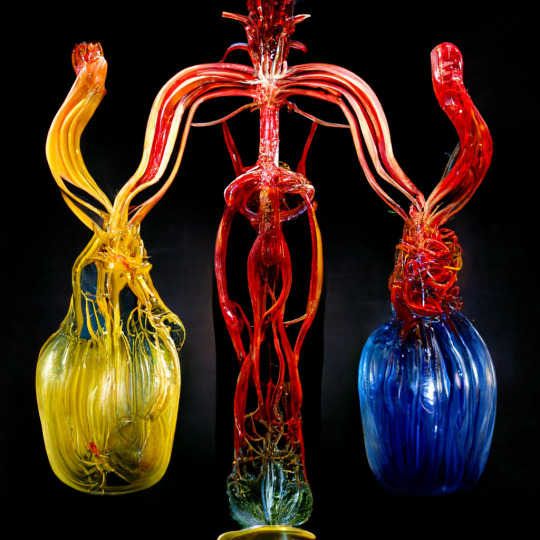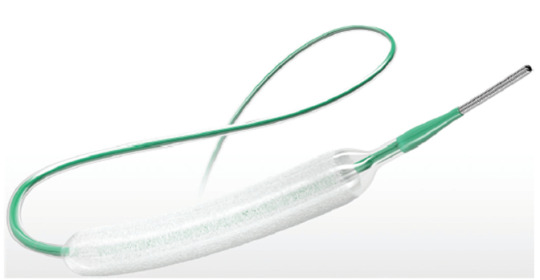#ai vascularity
Text




Some thick ginger muscle.
CivitAI
22 notes
·
View notes
Text






Who needs a gallery when you've got Will's camera roll? 📸 He just sent you a surprise text with his top self-photos—dark hair, muscles, and those mesmerizing blue eyes! 😎
#Will#nerm candy#nermcandy#ai art#anime art#anime ai#anime#anime hunks#anime men#ai men#ai boyfriend#ai muscle#ai bodybuilder#hyper muscle#ai muscle growth#ai vascularity
10 notes
·
View notes
Text

"Quarry Worker" (0003)
(More of The Working Body Series)
Quarry Worker 0002
Quarry Worker 0001
Lumberjack 0001
#ai artwork#ai men#ai generated#ai art community#ai gay#gay ai art#ai fashion#fashion illustration#bodybuilder#bodybuilder boyfriend#laborer#laborers#big pecs#vascular#ripped jeans#cutoffs#stone#gay fantasy#muscular#muscular definition#big legs#quadriceps#hard labor#beefcake pinup#male pinup#hunky man#hunky guy#hunky men#sexy hunk#cale
26 notes
·
View notes
Text

Vascularity - Extreme
42 notes
·
View notes
Photo








The human heart and circulatory system in the style of Dale Chihuly glass sculptures, as imagined by Midjourney.
#human heart#vascular#circulatory system#dale chihuly#glass sculpture#glassblowing#midjourney#ai art
27 notes
·
View notes
Text

My mother has a belief about a previous carer. He was a distant "friend of the family" sort of person. When my mother landed in hospital for a few weeks during the pandemic it was illegal for me to cross the state border to sort things out, so this man volunteered to pick her up from the hospital and be her carer. Otherwise the hospital would have put her into some random nursing home which, prior to vaccines, was the most dangerous place for her to be!
Anyway he was a hippy and she is a very mainstream conservative, so they rubbed each other up the wrong way daily. Now she blames anything that goes missing on him. I doubt he stole anything. He doesn't seem like that sort of person. Also, when she finds things that she was sure he'd taken she says he snuck back into the house during the night and put them back!
Oh well, you've got to allow yourself to be amused by these things or you'll be swallowed up by the grief for all that is being lost.
As Teepa Snow says, you need to keep your eye on what remains, not on what is being lost. Gratitude is good for your mental health.
0 notes
Text
AI-Powered Dementia Detection: A Digital Solution for Identifying Undiagnosed Cases

Scientists from the Regenstrief Institute, IUPUI, Indiana University, and the University of Miami are using Artificial Intelligence to identify undiagnosed cases of dementia in primary care settings as part of the Digital Detection of Dementia (D3) study. The study aimed to improve the timely diagnosis of dementia and provide diagnostic services to those who have been identified as cognitively impaired.
Alzheimer’s disease and other forms of dementia (ADRD) impact millions of Americans and their caregivers, with an annual societal cost of over $200 million. Unfortunately, many people with ADRD go undiagnosed, and even when a diagnosis is made, it often comes 2 to 5 years after the onset of symptoms, when the disease is already in the mild to moderate stage. This delay in diagnosis reduces the chances of improving outcomes through drug and non-drug treatments and prolongs the expense of medical care. Also, delayed detection results in increased disabilities for patients, families, and society, and traditional methods such as cognitive screening tests and biological markers often fail to detect ADRD in primary care.
The researchers developed an AI tool called a Passive Digital Marker, which uses a machine learning��algorithm and natural language processing to analyze a patient’s electronic health record. The tool combines structured data, such as notes about memory problems or vascular issues, with unstructured information to identify potential indicators of dementia.
Continue Reading
#bioinformatics#artificial intelligence#machinelearning#dementia#alzheimers#digital health#health tech#science news#science side of tumblr
94 notes
·
View notes
Text
“From the river to the sea…”
Let’s talk about such a scenario in which Israel is erased.
7:00 a.m.: You wake up and try to unlock your iPhone to read email, but it won’t unlock.
Why? Because Face ID is Israeli tech. It was invented by PrimeSense, and acquired by Apple.
7:30 a.m.: Before heading to work, you go into your garden to make sure your grass is being watered.
Nope, can’t use drip irrigation. That’s an Israeli invention.
8:00 a.m.: You get into your car and try to turn on Waze so you can know where there is traffic.
It won’t open because Waze is Israeli.
8:30 a.m.: On the way to work, you almost lose control of your car because it didn’t notify you that you were swerving out of your lane.
That’s because Mobileye is based in Jerusalem.
9:00 a.m.: “Fine,” you say to yourself, “I don’t need Waze or Mobileye anyway. Soon my car will be autonomous.”
Nope. Innoviz is Israeli.
9:30 a.m.: You get to work and get ready to have your first meeting on Microsoft Teams. It won’t work.
All the AI on Teams? Built in Herzliya.
10:00 a.m.: You try to use your USB thumb drive on your computer. No go.
Thumb drives (a.k.a. flash drives or memory sticks) were invented by Dov Moran at Msystems, and acquired by SanDisk.
11:00 a.m.: You need to access some classified information but it’s behind a firewall. No way around it.
Firewall technology? Invented in Israel.
12:00 p.m.: You look out your office window and the sky is so beautiful, you want to take a photo.
Nope. Smartphone dual lens technology was invented by Israeli company Corephotonics.
1:00 p.m.: You have a lot of work to do. You fire up your PC but it won’t boot up.
Is it running on an Intel processor? Oh, yeah, that was designed in Israel.
2:00 p.m.: You’re getting really frustrated. Nothing is working! So you turn to Google, but even that won’t work.
Google builds many of its products in Tel Aviv.
3:00 p.m.: You decide to FaceTime your wife to vent your frustrations. Why won’t it work?!
Because voice over IP was invented in Israel.
3:30 p.m.: You’re really losing patience, so you go to your favorite instant messenger program to speak to a friend.
Nope, instant messaging was invented in Israel.
4:00 p.m.: You give up and decide to focus on work exclusively – you need to build a website.
Sorry, Wix is Israeli. You can’t use it.
5:00 p.m.: You get a call from your doctor. He wants you to come in because he saw something troubling in your last check-up. He wants to use the PillCam.
You have to inform him that’s a no-go. That’s Israeli tech.
6:00 p.m.: Since your car is unreliable, you decide to take public transportation. But your Moovit app won’t load for some reason.
It’s Israeli.
6:30 p.m.: You decide to do some shopping for a new car because it’s time to go electric.
Sorry. Better Place CEO Shai Agassi pioneered the infrastructure for electric cars in 2012.
7:00 p.m.: You get a call with bad news – your relative was recently diagnosed with cancer. He needs your help finding the best treatment.
Unfortunately, you can’t help him because many of the leading cancer treatments were developed in Israel by companies like Novocure and Vascular Biogenics.
8:00 p.m.: You’ve had a hard day and just want to chill out in front of your social media feeds. But none of your feeds will load.
Meta, parent company of Facebook, Instagram, and WhatsApp, has many offices in Israel.
9:00 p.m.: Time for a late dinner. You want to prepare alternative meats or dairy products.
Your supermarket doesn’t sell them, however, because Redefine Meat and Remilk are Israeli startups.
10:30 p.m.: You decide to read your book, but you can’t find your glasses anywhere.
That’s because you bought them on GlassesUSA, an Israeli company.
11:00 p.m.: Your last resort: Watch some TV. Wait – your Samsung TV won’t turn on!
Samsung has many offices in Israel, including Samsung Next, a fund that invests in tech.
You go to sleep and hope tomorrow will be a better day.
Here, try this new rhyme instead: “From the river to the sea, if Israel is gone, what will be with me?!”
7 notes
·
View notes
Text
“From the river to the sea…”
Let’s talk about such a scenario in which Israel is erased.
7:00 AM: You wake up and try to unlock your iPhone to read email, but it won’t unlock. Why? Because Face ID is Israeli tech. It was invented by Primesense, acquired by Apple.
7:30 AM: Before heading to work, you go into your garden to make sure your grass is being watered. Nope, no drip irrigation. That’s an Israeli invention.
8:00 AM: You get into your car, and try to turn on Waze so you can know where there is traffic. It won’t open because Waze is Israeli.
8:30 AM. On the way to work, you almost lose control of the car because it didn’t notify you that you were swerving out of your lane. Why? Because Mobileye is based in Jerusalem.
9:00 AM: “Fine”, you say to yourself, “I don’t need Waze or Mobileye anyway. Soon my car will be autonomous.” Nope. Innoviz is Israeli.
9:30 AM. You get to work and have your first meeting on Microsoft Teams. It won’t work. All the AI on teams? Built in Herzliya.
10:00 AM. You try to use your USB thumb drive on your computer. No go. Invented by Dov Moran at Msystems, and acquired by Sandisk.
11:00 AM: You need to access some classified information but it’s behind a firewall. Sorry, you can’t do anything about that. Firewall technology? Invented in Israel.
12:00 PM: You look out your office window and the sky is so beautiful, you want to take a photo? Nope. Smartphone dual lens technology was invented by the Israeli company Corephotonics. 1:00 PM. You have a lot of work to do. You fire up your PC but it won’t boot up. Is it running an Intel processor? Oh, yeah, it was designed in Israel. 2:00 PM: You’re getting really frustrated. Nothing is working! So you turn to Google but even that won’t work. Google builds many of its products in Tel Aviv.
3:00 PM: After a frustrating hour trying to get things to work, you decide to FaceTime your wife to vent. Why won’t it work? Because voice over IP? Invented in Israel.
3:30 PM: You’re really losing patience so you go to your favorite instant messenger to speak to a friend. Nope, instant messaging was invented in Israel.
4:00 PM. You give up and decide to focus on work exclusively. Do you have to work on building a website? Sorry, Wix is Israeli. You can’t use it.
5:00 PM. You get a call from your doctor. He wants you to come in because he saw something troubling in your last check-up. He needs to use the PillCam. You have to inform him that’s a no-go. It’s Israeli tech.
6:00 PM: Since your car is unreliable, you decide to take public transportation. Your Moovit app won’t load for some reason. It’s Israeli.
6:30 PM: You decide to do some shopping for a new car because it’s time to go electric. Sorry, nope. Better Place CEO Shai Agassi pioneered the infrastructure for electric cars in 2012.
7:00 PM: You get a call with bad news, your relative was recently diagnosed with cancer. Unfortunately, you can’t help him because many of the leading cancer treatments were developed in Israel by companies like Novocure and Vascular Biogenics.
8:00 PM: You’ve had a hard day and you just want to chill out in front of your social media feeds but all of your feeds won’t load. Meta, the parent company of Facebook, Instagram, and WhatsApp, has many offices in Israel.
9:00 PM: A late dinner. You want to prepare alternative meats or dairy products. You can’t find them in the supermarket because Redefine Meat and Remilk are Israeli startups.
10:30 PM: You decide to read your book. You can’t find your glasses anywhere. That’s because you bought them on GlassesUSA, an Israeli company.
11:00 PM: Your last resort, watching some TV. Your Samsung TV won't turn on! Well, that’s because Samsung has many offices in Israel including Samsung
Next, a fund that invests in tech. You go to sleep and hope tomorrow will be a better day.
Here, try this new rhyme instead: “From the river to the sea, if Israel is gone, what will be with me?!”

9 notes
·
View notes
Text

Colossal construction worker admiring his physique in a mirrored glass curtain wall after work.
ChatGPT with DALL-E
#ChatGPT#DALL-E#ai image#ai generated#ai muscle#ai bodybuilder#ai construction worker#ai art#ai vascularity#mirrored wall
110 notes
·
View notes
Note
Wonderful work! Just started creating using Bing Image Creation with help with prompts by ChatGPT. I’ve also just started messing with Playground AI. Do you have any pointers or recommendations for someone who’d love to make freakishly huge and vascular men?
Thanks in advance.
Just keep experimenting and playing with the app. Use words like "oversized", "overdeveloped" or "giant" to get huge bodybuilders. It's like a game with no rules and plenty of surprises.
5 notes
·
View notes
Text

"Quarry Worker - 0001"
(The Working Bodies Series)
#ai artwork#ai men#ai generated#ai art community#ai image#ai gay#gay ai art#ai fashion#fashion illustration#bodybuilder#bodybuilder boyfriend#laborer#laborers#big pecs#vascular#ripped jeans#cutoffs#stone#gay fantasy#muscular#muscular definition#big legs#quadriceps#hard labor
36 notes
·
View notes
Text


Some process notes:
What I am showing here is what SD gave me in the first image, and my edits with Photoshop in the second.
The prompt for the AI was very simple: "shirtless guy in a garden swing with multicolored robes." I "roop'ed" SNL player, Andrew Dismukes to influence the face.
I picked the best of 40 generated images from the prompt, and upsized it.
In Photoshop, I cropped out whatever the heck was going on below his waist. Next, I attacked the obvious missing rope holding his swing up, by duplicating a bit of it, moving, blending, and blurring that bit to the subject's right shoulder.
The next challenge was his left hand holding onto the rope. THREE FINGERS! Typical of AI generated images of course. I selected that section of the image, digitally added another finger with my limited Photoshop skills and sent it back to SD img2img to refine. I picked the best out of 30 iterations and pasted it back into place.
Using Photoshop's AI-powered and insanely awesome new Remove Tool, I cleaned up a lot of blemishes and smoothed out the overly defined musculature and vascularity of the original AI-rendered image. I also selected small sections of the progress so far and nudged things around with PS's Liquify tool.
Finally, the incredibly powerful Camera RAW tool of Photoshop cannot be underestimated. For my final rendering of this image, I made several adjustments to color, sharpness, tinting, noise, fog, etc. And I use a lot of the presets, including Adobe's own AI-adjustments such as "popping the subject".
Overall, I upsize from Stable Diffusion an outrageous amount and work with that in Photoshop until I am satisfied. And then I downsize for sharing on social media.
If you read this far and want to learn more of my process, then drop me a PM. I am happy to correspond with you whether you're doing gay pin-up imagery as I am, or any kind of generative art.
I know the traditional analog media and digital artists who've worked hard on their craft are conflicted on this. I believe they will continue to persist. I want to be part of an emerging segment of digital and there is plenty of room!
#ai digital art#ai tutorial#stable diffusion#stable diffusion 1.5#ai workflow#hunk#muscle#ai hunk#ai hot male
37 notes
·
View notes
Text
Global Top 3 Companies Accounted for 69% of total Drug Eluting Balloons(DEB) market (QYResearch, 2021)
A drug-eluting balloon is a non-stent technology in which the effective homogenous delivery of anti-proliferative drugs is processed by the vessel wall through an inflated balloon. This is done to restore luminal vascularity in order to treat atherosclerosis, in-stent restenosis and reduce the risk of late thrombosis without implanting a permanent foreign object. The balloon technology relies on the concept of targeted drug delivery, which helps in the rapid healing of the vessel wall and prevents the proliferation of smooth muscle cells.
Drug eluting balloon is a semi-compliant angioplasty balloon, coated with anti-proliferative medicine. The medicine is ejected to the vessel walls during the inflation of the balloon. The balloons are inflated through application of nominal pressure.

Source: Secondary Literature and QYResearch, 2021
According to the new market research report “Global Drug Eluting Balloons(DEB) Market Report 2023-2029”, published by QYResearch, the global Drug Eluting Balloons(DEB) market size is projected to reach USD 1.56 billion by 2029, at a CAGR of 12.8% during the forecast period.
Figure. Global Drug Eluting Balloons(DEB) Market Size (US$ Million), 2018-2029

Based on or includes research from QYResearch: Global Drug Eluting Balloons(DEB) Market Report 2023-2029.
Figure. Global Drug Eluting Balloons(DEB) Top 3 Players Ranking and Market Share(Based on data of 2021, Continually updated)

Based on or includes research from QYResearch: 2021 data information of Global Drug Eluting Balloons(DEB) Market Report 2023-2029.
The global key manufacturers of Drug Eluting Balloons(DEB) include B. Braun, Medtronic, etc. In 2021, the global top three players had a share approximately 69.0% in terms of revenue.
About QYResearch
QYResearch founded in California, USA in 2007.It is a leading global market research and consulting company. With over 16 years’ experience and professional research team in various cities over the world QY Research focuses on management consulting, database and seminar services, IPO consulting, industry chain research and customized research to help our clients in providing non-linear revenue model and make them successful. We are globally recognized for our expansive portfolio of services, good corporate citizenship, and our strong commitment to sustainability. Up to now, we have cooperated with more than 60,000 clients across five continents. Let’s work closely with you and build a bold and better future.
QYResearch is a world-renowned large-scale consulting company. The industry covers various high-tech industry chain market segments, spanning the semiconductor industry chain (semiconductor equipment and parts, semiconductor materials, ICs, Foundry, packaging and testing, discrete devices, sensors, optoelectronic devices), photovoltaic industry chain (equipment, cells, modules, auxiliary material brackets, inverters, power station terminals), new energy automobile industry chain (batteries and materials, auto parts, batteries, motors, electronic control, automotive semiconductors, etc.), communication industry chain (communication system equipment, terminal equipment, electronic components, RF front-end, optical modules, 4G/5G/6G, broadband, IoT, digital economy, AI), advanced materials industry Chain (metal materials, polymer materials, ceramic materials, nano materials, etc.), machinery manufacturing industry chain (CNC machine tools, construction machinery, electrical machinery, 3C automation, industrial robots, lasers, industrial control, drones), food, beverages and pharmaceuticals, medical equipment, agriculture, etc.
0 notes
Text
Revolutionary Remedies: Game-Changing Medical Devices for All
Miniaturization of Devices for Improved Patient Care
One of the most significant advancements in surgical devices over recent decades has been the miniaturization of diagnostic and therapeutic technologies. Where bulky machines once filled hospital rooms, we now have devices small enough to be implanted within the body or worn inconspicuously. Catheter-based procedures have greatly expanded treatment options for conditions like heart disease with minimally invasive techniques. Devices designed for single-use or short-term implants eliminate the risk of infection from repeated surgeries.
An array of minimally invasive coronary stents, cerebrovascular coils, and vascular plugs now offer alternatives to open-heart or brain surgeries. As material science and engineering capabilities progress, we are able to design devices on an increasingly smaller scale. Microelectromechanical systems (MEMS) technology transforms components like sensors, actuators and electronics into miniature packages just millimeters in size. These allow for sophisticated monitoring and therapeutic capabilities to be deployed locally within the body instead of through larger external machines.
Wireless Connectivity and Remote Patient Monitoring
Cloud computing and wireless connectivity enable real-time data transmission from implanted and wearable devices. Conditions can now be monitored around the clock from anywhere rather than relying on intermittent clinic or hospital visits. This remote patient monitoring dramatically improves management of chronic diseases. Implanted cardiac defibrillators, pacemakers and neurostimulators transmit regular device checks andpatient health status updates wirelessly. Wearable sensors continuously track vital signs, activity levels, blood glucose and more for patients with chronic conditions.
Physicians receive alerts for concerning trends or symptoms in near real-time. Remote monitoring substitutes many routine follow-ups with virtual consultations, freeing up clinical resources. It also enhances care by catching issues early before they escalate into emergencies. Combined with electronic health records, current and historical data streams facilitate more proactive, personalized treatment tailored to an individual's disease progression over time. Artificial intelligence leverages these vast datasets to predict outcomes and optimize therapies. Wireless connectivity is revolutionizing chronic care delivery through virtual integration of patients into clinical workflows anytime, anywhere.
Advancements in Material Science for Medical Devices
Biocompatibility is a top priority in materials selection for implantable devices, which must withstand the body's immune responses and degrading effects over years or decades. New materials are continuously being developed and refined to maximize corrosion resistance, mechanical strength and hemocompatibility. Researchers work to fabricate surfaces with nano- or microscale topographies tailored to promote integration with surrounding tissues without scarring.
Coatings delivering controlled drug elution aim to prevent infection and rejection of implants. Degradable magnesium alloys dissolve gradually and harmlessly as bone regrows in their place after supporting healing fractures. Composite materials combine strength, flexibility and biodegradability for applications like sutures and anatomical models that were previously 3D printed from permanent plastics. Advances in resorbable polymer engineering now facilitate implantable electronic devices that serve their purpose and dissolve safely once no longer needed. Continuous progress in materials science keeps expanding the range of medical conditions addressable through implantable options.
Artificial Intelligence in Medical Devices
The future of surgical devices lies at the intersection of continuous data streams from wireless sources and rapidly advancing AI capabilities. Machine learning algorithms can identify patterns across millions of datapoints to augment clinical decision-making. Diagnostic support through AI analysis of medical images, genetic sequences and wearable metrics will become commonplace. Event monitors for arrhythmias and neurostimulators for epilepsy already utilize AI to enhance detection of episodes and automatic or remote therapeutic responses.
Integration of virtual assistants with hospital systems allows AI agents to pull relevant patient data, flag any abnormal findings from device feeds in real-time and suggest optimized treatment protocols continuously updated from massive external datasets. Miniaturized, personal AI coaches may in future be embedded within implantable devices to ensure round-the-clock monitoring and therapeutic responses tailored to individual pathophysiology and lifestyle factors. AI will drive increasingly predictive, preemptive and personalized health strategies leveraging the deluge of information captured through connected surgical devices.
As data sovereignty and cybersecurity concerns are addressed, the AI-enabled future promises less invasive procedures, at-home recovery, chronic disease prevention and coordination of complex care across provider networks all optimized for each unique patient. Upgraded with intelligence, medical devices offer unprecedented potential to transform outcomes, accessibility and cost-effectiveness of global healthcare delivery. Exciting advancements lie ahead as researchers and engineers push boundaries to develop and apply new capabilities that improve and extend human life.
0 notes
Text
Unveiling the Power of Ultrasound Services: Revolutionizing Healthcare
In the realm of modern medicine, technological advancements continually redefine the landscape of patient care. Among these innovations, ultrasound services stand out as a cornerstone in diagnostic imaging. From its humble beginnings to its current state-of-the-art applications, ultrasound has revolutionized healthcare by providing non-invasive, real-time imaging solutions for a myriad of medical conditions. In this article, we delve into the multifaceted world of ultrasound services perth, exploring its evolution, applications, and future prospects.
A Brief History: The roots of ultrasound technology trace back to the early 20th century when scientists experimented with sound waves for various purposes. However, it wasn't until the mid-20th century that ultrasound found its way into medical practice. In 1956, Ian Donald, a Scottish obstetrician, pioneered the use of ultrasound for obstetrics, forever changing the landscape of prenatal care. Since then, ultrasound technology has undergone exponential growth, with advancements in imaging quality, portability, and versatility.
Applications in Healthcare: ultrasound Perth encompass a broad spectrum of applications across multiple medical specialties. In obstetrics and gynecology, ultrasound plays a crucial role in monitoring fetal development, diagnosing gynecological conditions, and guiding procedures such as amniocentesis. In cardiology, echocardiography provides invaluable insights into heart function, aiding in the diagnosis of various cardiovascular diseases. Moreover, ultrasound is indispensable in imaging the abdomen, musculoskeletal system, and vascular structures, enabling clinicians to visualize internal organs and detect abnormalities with precision.
Advantages Over Other Imaging Modalities: One of the primary advantages of ultrasound lies in its safety profile. Unlike ionizing radiation-based modalities such as X-rays and CT scans, ultrasound relies on sound waves, making it non-invasive and devoid of radiation exposure. This makes it particularly suitable for vulnerable populations such as pregnant women and children. Additionally, ultrasound offers real-time imaging capabilities, allowing for dynamic assessment of organ function and blood flow, which may not be feasible with other imaging modalities.
Technological Advancements: Recent years have witnessed remarkable advancements in ultrasound technology, enhancing its diagnostic capabilities and expanding its clinical utility. High-resolution imaging, three-dimensional reconstruction, and Doppler techniques for assessing blood flow have become standard features in modern ultrasound systems. Furthermore, miniaturization and portability have made ultrasound devices more accessible, enabling point-of-care imaging in diverse clinical settings, including emergency departments, intensive care units, and remote areas with limited resources.4d ultrasound
Future Prospects: Looking ahead, the future of baby ultrasound Perth appears promising, driven by ongoing technological innovations and emerging applications. Artificial intelligence (AI) holds tremendous potential in augmenting ultrasound interpretation through automated image analysis and pattern recognition algorithms. Furthermore, the integration of ultrasound with other imaging modalities, such as MRI and CT, could unlock new avenues for multimodal imaging and personalized medicine. Additionally, advancements in handheld and wireless ultrasound devices may further democratize access to imaging services, particularly in underserved regions.
Conclusion: Ultrasound services represent a cornerstone in modern healthcare, offering non-invasive, real-time imaging solutions across a diverse range of medical specialties. From its inception as a tool for obstetricians to its current status as a ubiquitous diagnostic modality, ultrasound has transformed the way clinicians visualize and diagnose medical conditions. With ongoing technological advancements and expanding applications, ultrasound services are poised to continue revolutionizing healthcare, ushering in an era of precision medicine and improved patient outcomes.
0 notes